In modern home design, wicker furniture is popular for its lightness, naturalness and elegance. However, did you know that this kind of furniture is not a recent invention, but has a long and rich history. Let's trace the origin and development of wicker furniture and see how this unique weaving art has left its mark in different historical periods.
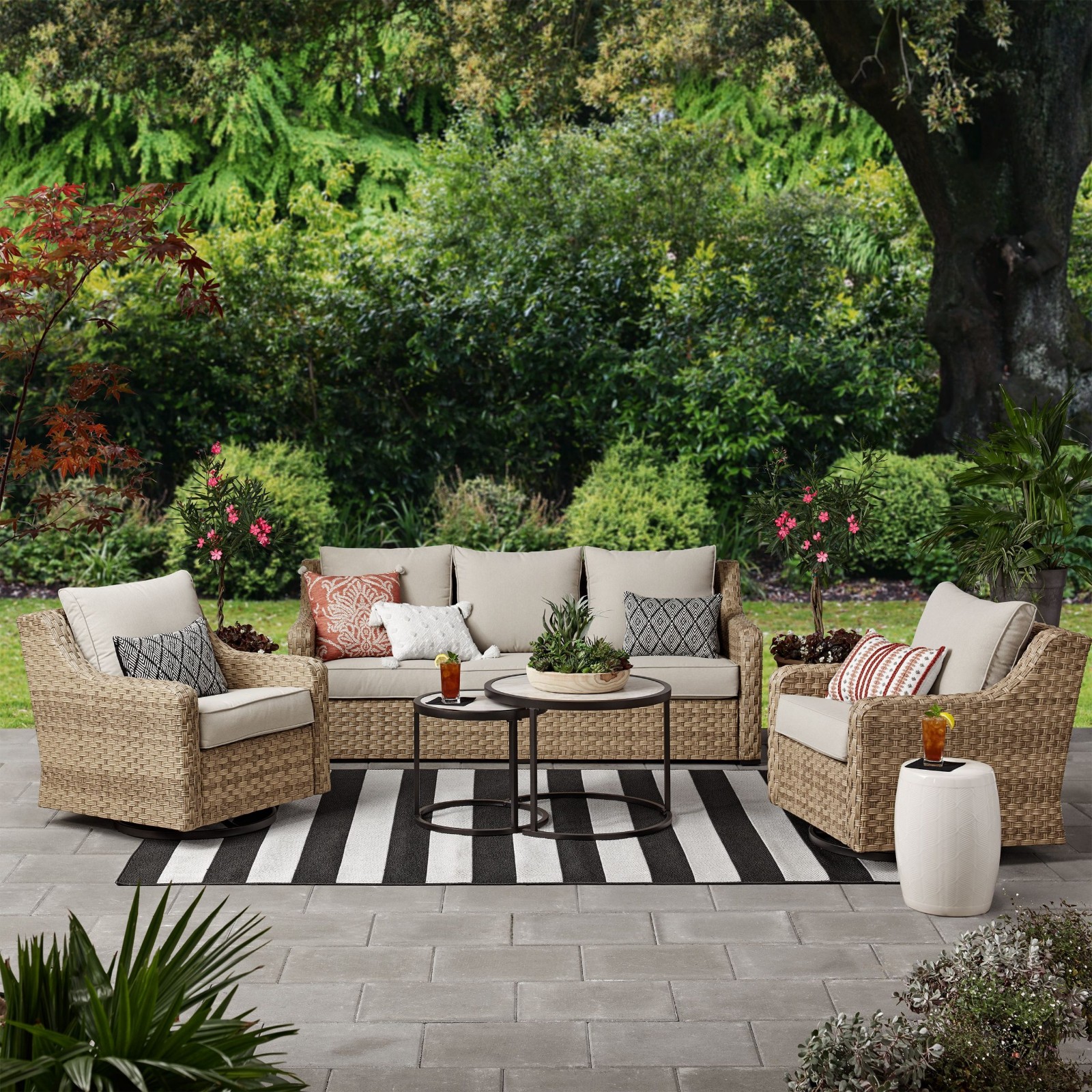
A Brief History of Wicker Furniture
Wicker furniture is furniture woven from wicker. As a flexible, light and tough material, wicker has been widely used by humans since ancient times. Wicker furniture has a long history, spanning nearly 5,000 years. The earliest wicker furniture can be traced back to ancient Egypt and ancient Rome, when people had already begun to use wicker to make chairs, baskets and other daily necessities. The word "wicker" comes from Scandinavian origin and originates from the words wika, which means "bend", and vikker, which means "willow".
The production process of wicker furniture is relatively simple, but requires exquisite manual skills. Craftsmen soak the wicker in water to soften it, and then weave it into furniture of various shapes and styles through a fine weaving process. It is this craftsmanship that makes each piece of wicker furniture unique and full of artistic sense.
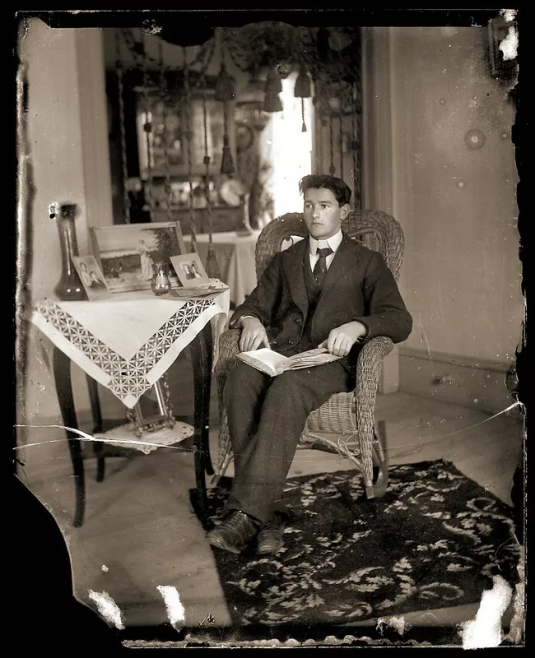
(Pictures of 20th Century Wicker Furniture)
Historical Timeline of Wicker Furniture
In order to better understand the development of wicker furniture, we can sort out its important nodes in various historical periods in chronological order.
● Ancient civilization period: Wicker furniture has appeared in ancient Egypt and ancient Rome, mainly used to make daily necessities such as chairs and baskets.
● Middle Ages: Wicker furniture continued to develop in Europe, but its status was gradually replaced by wooden furniture.
● 17th century: Wicker furniture rose again in Europe and became a fashionable choice for nobles and wealthy people.
● Victorian era: Wicker furniture was very popular in Britain and became a must-have for gardens and balconies.
● 19th century: With the advent of the Industrial Revolution, the production process of wicker furniture was improved and the output increased significantly.
● 1960s and 1970s: Wicker furniture ushered in a short revival in the European and American markets and became synonymous with fashion.
● 21st century: Wicker furniture has risen again in modern home design, and is favored for its environmentally friendly and natural characteristics.

The Prototype of Wicker Furniture (First)
To trace the prototype of wicker furniture, we must go back to ancient Egypt. During archaeological excavations in the Nile River Basin, archaeologists discovered some chairs and baskets woven with wicker. The history of these items can be traced back to around 3000 BC. The ancient Egyptians used the flexibility of wicker to weave furniture and containers that were both beautiful and practical.
These wicker furniture are not only widely used in daily life, but also play an important role in religion and rituals. The nobles and priests of ancient Egypt often used exquisite wicker chairs as a symbol of identity and status. It can be said that these ancient wicker furniture are the prototypes of modern wicker furniture.
Ancient Myths about Wicker
As a natural material, wicker is mentioned in many ancient myths and legends. For example, in ancient Greek mythology, wicker is closely associated with Demeter, the god of fertility and abundance. Legend has it that Demeter once rested under a willow tree and endowed it with magical powers to protect women and children.
In Celtic mythology, willow is regarded as a sacred material with healing and protective powers. The Celts often wove willow into amulets or items used in religious ceremonies, symbolizing the cycle of life and the gift of the earth.
In ancient Chinese culture, willow also has an important position. Willow symbolizes vitality and perseverance, and willow woven crafts are regarded as a symbol of wisdom and diligence. The ancient Chinese wicker weaving skills have a long history, and many traditional weaving methods are still in use today.
These ancient myths and legends not only add mystery and sacredness to wicker furniture, but also reflect human awe and reverence for the power of nature.
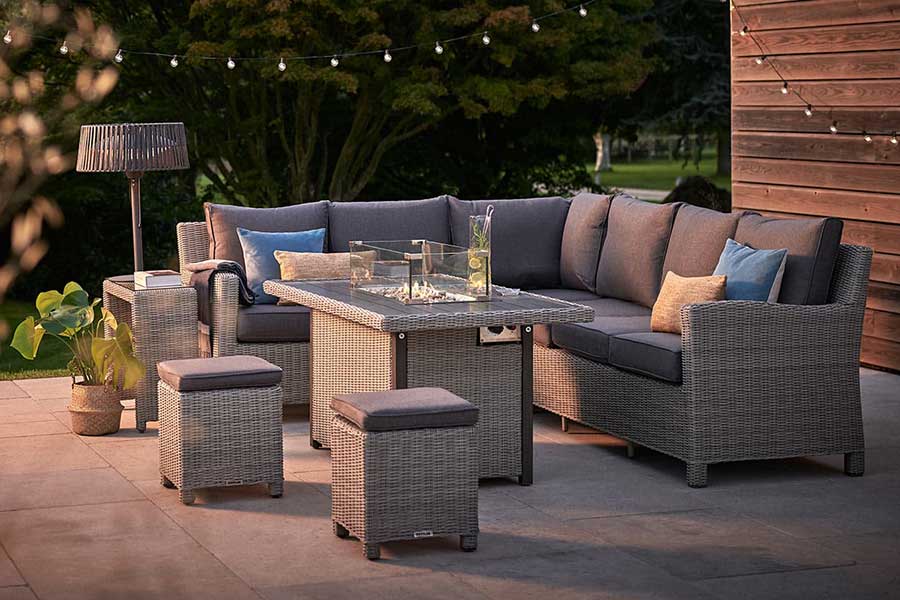
Objects Made of Wicker in Ancient Civilizations
In ancient civilizations, wicker was widely used to make various daily necessities. In ancient Greece, Rome and Egypt, wicker baskets and wicker chairs were common daily necessities. The ancient Greeks wove wicker into baskets of various shapes and sizes for storing food and items. The ancient Romans and Egyptians used wicker to make furniture, and wicker chairs were particularly popular among Roman nobles.
● Ancient Greece: Wicker baskets, wicker chairs, wicker screens, wicker containers.
● Ancient Rome: Wicker baskets, wicker beds, wicker lounge chairs, wicker parasols.
● Ancient Egypt: Wicker baskets, wicker chairs, wicker bed frames, wicker storage boxes.
These wicker products not only play an important role in daily life, but also have an important position in ancient trade. The lightness and durability of wicker products make them the first choice for ancient merchants and travelers.
Victorian Wicker
Entering the Victorian era, wicker furniture ushered in its golden age. In this era full of prosperity and change, wicker furniture was deeply loved by the British upper class because of its lightness, ventilation and natural characteristics. Exquisite wicker chairs, sofas and coffee tables can often be seen in Victorian gardens and balconies.
Victorian wicker furniture is not only more refined in design, but also introduces many innovative elements. For example, many wicker furniture features intricate weaving patterns and decorative details, which are both beautiful and practical. At the same time, Victorian wicker furniture also incorporates Eastern and Western design styles, showing the initial impact of globalization at the time.
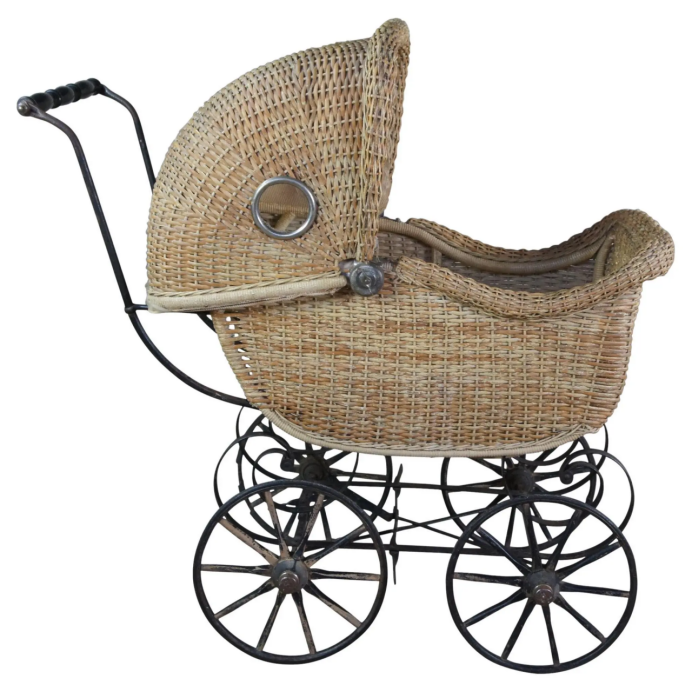
(Victorian Wicker Baby Carriage)
17th Century European Wicker Trends
In 17th century Europe, wicker furniture rose again and became a fashionable choice for the nobility and the rich. During this period, the design and production process of wicker furniture was greatly developed, and many classic wicker furniture styles appeared.
17th century wicker furniture is known for its intricate weaving process and exquisite decorative details. Through clever weaving techniques, craftsmen weave wicker into various shapes and patterns to create furniture that is both practical and beautiful. For example, 17th century wicker chairs are often equipped with high backs and armrests, which are both comfortable and elegant, and are the first choice for the nobility in the garden and balcony.
Wakefield's Wicker Furniture
Entering the 19th century, with the advent of the Industrial Revolution, the production process of wicker furniture was further improved. Wakefield is one of the representatives of wicker furniture in this period. Wakefield not only improved the production process of wicker furniture, but also developed many innovative designs to make wicker furniture more beautiful and practical.

(Wakefield Image)
History of the development of Wakefield wicker furniture - Early background: Cyrus Wakefield was born in 1811 and was originally an ordinary craftsman. In the 1840s, he founded a company in Massachusetts, and his initial business was to import and sell rattan. Rattan was mainly imported from Southeast Asia. During this period, the company focused on the manufacture of small products such as canes and baskets.
After entering the wicker furniture industry, Wakefield gradually realized the potential of wicker furniture and decided to use rattan for furniture manufacturing. Such as chairs, tables and sofas. In 1844, he founded the "Wakefield Rattan Company" to specialize in the production of wicker furniture. By processing rattan into wicker, Wakefield created a type of furniture that was light, durable and easy to shape, which quickly became popular in the market.
By the 1880s, Wakefield Rattan Company had become one of the largest wicker furniture manufacturers in the United States. The company continued to expand production and export products throughout the United States and overseas. At this time, wicker furniture had become a fashionable trend and the company had a dominant position in the market.
In 1897, Wakefield Rattan Company merged with Heywood Brothers & Co. to form Heywood-Wakefield Company. This merger marked the combination of two leading furniture manufacturers, forming a larger corporate entity that continued to lead the field of wicker furniture. The merged company not only retained the original wicker furniture business, but also expanded into the production of wood and metal furniture, further enriching the product line.

(Wicker Furniture of Heywood-Wakefield Company in the Early 20th Century)
The Heywood-Wakefield Company began to explore modern furniture design in the early 20th century, adopting a simple, streamlined design style that catered to the modernist trend of the time. The company continued to innovate, experiment with materials and designs, and became one of the important names in modern furniture design in the mid-20th century.
However, over time, wicker's popularity began to fade. Heywood-Wakefield Company's market share also gradually decreased, and the company eventually stopped making furniture altogether in 1979. In 1989, Wakefield's old manufacturing plant was designated on the National Register of Historic Places. The remaining buildings were demolished in 2005.
If you would like to learn more about Wakefield Rattan Company, please visit their official website: https://wakefieldhistory.org/.
A Brief Revival of Wicker Furniture in the 1960s and 1970s
In the 1960s and 1970s, wicker furniture ushered in a brief revival in the European and American markets. Wicker furniture of this period was deeply loved by the younger generation for its fashionable and modern design style.
Wicker furniture designs in the 1960s and 1970s were more bold and innovative, with bright colors and unique shapes. For example, many wicker chairs and sofas adopted a streamlined design, which was both comfortable and stylish. At the same time, wicker furniture of this period also incorporated bohemian and hippie styles, showing the influence of popular culture at the time.
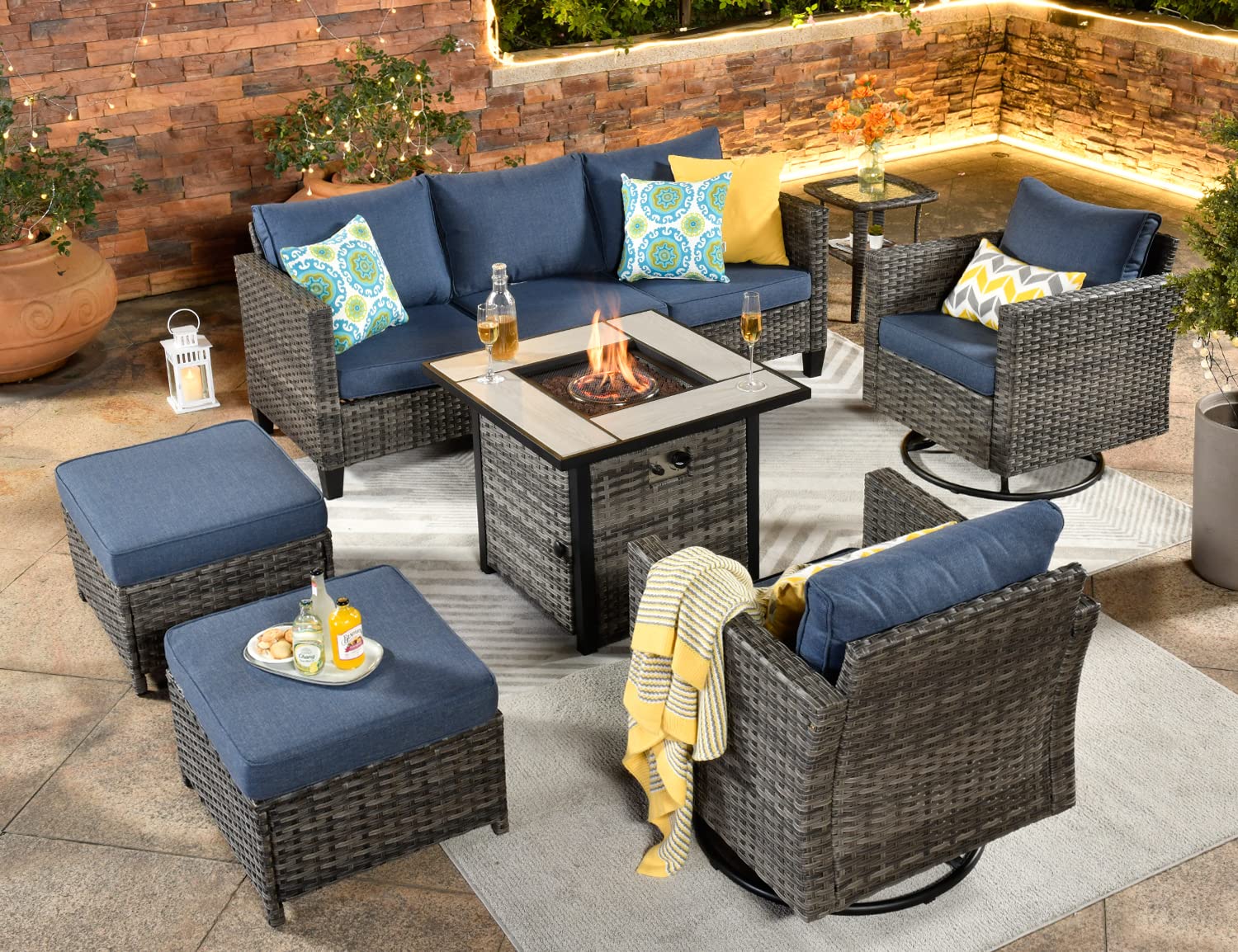
Modern Wicker Furniture in the 21st Century
Entering the 21st century, wicker furniture has risen again and become an important element in modern home design. Modern wicker furniture is not only more diversified in design, but also introduces many new materials and production processes to make it more durable and environmentally friendly.
Modern wicker furniture has a variety of design styles to meet the needs of different consumers. For example, modern wicker chairs and sofas often adopt simple and minimalist design styles, which are both beautiful and practical. At the same time, modern wicker furniture also pays attention to environmental protection and sustainable development. Many manufacturers have begun to use renewable materials and environmentally friendly processes to reduce the impact on the environment.
Summary of the History of Wicker Furniture
By reviewing the history of wicker furniture, we can see that this unique weaving art has not only left a deep mark in different historical periods, but also continued to develop and evolve to adapt to the needs of different times. From ancient civilization to modern society, wicker furniture has always been loved by people for its lightness, naturalness and elegance. Whether in the royal palace of ancient Egypt or in modern fashionable homes, wicker furniture has demonstrated its unique charm and unlimited possibilities.
I hope this article can help you better understand the history and trends of wicker furniture, so that you can be more comfortable when choosing and using wicker furniture. If you want to learn more about wicker furniture, please click https://www.hanseoutdoor.com/.

